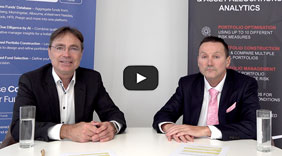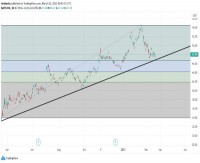|
Protecting the Code A major hedge fund scandal concerning intellectual property erupted this July. A former Goldman Sachs computer programmer, Sergey Aleynikov, was arrested by the FBI for stealing a trading model he had created for the bank. According to court papers filed by the prosecutors, the proprietary computer code in question facilitates “sophisticated, high-speed and high-volume trades on various stock and commodities markets.” At the time Mr. Aleynikov was employed by Teza Technologies, a new trading business founded by three former executives of Citadel Investment Group, Ken Griffin’s $12 billion hedge fund firm. Citadel sued the three former executives, accusing them of violating non-competition agreements and committing industrial espionage. The suit revealed some of the measures Citadel takes to protect its software. It is useful to have practical guidelines as to intellectual property, especially as computer models are essential for commodity trading advisors, quantitative traders in general and certain macro managers. This is a complex and changing area of law. MontaguLaw’s Alexandre Montagu, an expert on intellectual property issues, provided the explanations and pointers below. Mr. Montagu started his career at law firm Sullivan & Cromwell LLP and served as general counsel to a number of companies. He works on international commercial transactions and new media law as well as intellectual property. Every firm needs to have a strategy on how to deal with intellectual property. If you let events shape your responses instead of thinking through it beforehand, you can end up with unexpected and unpleasant consequences. It is best if there is a unified and documented strategy that everybody in the firm agrees to. With respect to intellectual property in a commodity trading advisor or hedge fund setting, there are key facts and issues to keep in mind, whether you’re a manager or an investor. Perhaps the most basic one is that people tend to use the term “proprietary” loosely. When a manager believes the name of his firm is proprietary or a trader tells an investor he has a proprietary model, the question is what makes that brand name or model proprietary. Here is a summary review of the basic decisions to be made and steps taken. Checklist 1. Have a thorough trademark search before deciding on the name.
2. Make sure to register the name. Given the importance of proprietary trading algorithms for commodity trading advisors and quantitative hedge funds, investors as well as managers need to be clear about the status of the property. In order to decide how to get intellectual property protection, you have to first establish what the product is.
3. Is the product copyrightable software? Even if you have copyright protection, you will be required to show that someone copied the computer code to make the case that they violated your property right. If they learnt it and used it to trade but did not reproduce it, that is not a violation of copyright. By contrast, if an algorithm is a trade secret, if someone does not download it but memorizes and shares it with another person, it may be possible – though difficult – to prove violation through testimony. Copyright vests automatically upon creation of the work, although we recommend that our clients file with the copyright office because then you can collect statutory damages and attorney’s fees in case of infringement. But this is not essential. You do not need to file for copyright to establish violation and you can file the application after you find out that there is an infringement.
4. Should the product be patented?
5. If it’s a trade secret, what is the jurisdiction? Under New York law, a trade secret is defined as an idea that you’ve come up with yourself and that may help you gain a commercial advantage. It has to be kept secret, not disclosed outside the company. The formula for Coca Cola is probably the best-known example of a trade secret. Thus in the case that started this summer against a former employee of Goldman Sachs, the proprietary model was a trade secret as defined by New York law. 6. Who developed the algorithm? 7. Was there more than one person involved? 8. Is there a contract about the ownership? 9. If there is no contract, what protections are available? Litigation between joint inventors happens in many fields. In developing a trading model, a proper contract should be signed by all parties as soon as possible. Note that in the Goldman case the defendant had written the trading algorithm but the company owned it. Taking it is like taking any other company property—theft subject to criminal sanctions.
10. Is a non-US jurisdiction involved? Indian law is different from US law; it protects confidences rather than trade secrets. If I place my trust and confidence in you and you breach that trust, then I can get a legal remedy. But a US business would not have a recourse against the former employee of an Indian outsourcing company because the US firm never had a relationship of trust and confidence with that employee. Under US law, you don’t need to have that relationship to enforce your property right to the model. The Bilski Case In short, everybody involved in developing a model, whether contractor or employee, need to sign the right kind of agreement. Investors should inquire about this when told there is a proprietary trading model. If somebody who works on the model is in another jurisdiction, before going ahead inquire about the laws of that jurisdiction and the risks under those laws. Even in the US, the legal picture is still unsettled. The Supreme Court is expected to decide a major financial patent case this summer. Bernard Bilski and Rand Warsaw seek to patent a method for hedging weather risk in commodity trading. Their application has been rejected by the Patent and Trademark Office. If the Supreme Court does not overturn the decision of a lower court, the Bilski case will be another argument against seeking patent protection for financial algorithms. The field of intellectual property has changed radically since the Internet brought down the cost of distributing information and made intellectual products more international. We need to think globally as well as in terms of the new capabilities created by new technology. But the laws have not kept up with these developments and there is a lot of uncertainty. Your best bet is to think through the issues beforehand and take the appropriate steps to protect your IP. |
|
This article was published in Opalesque Futures Intelligence.
|





 RSS
RSS










